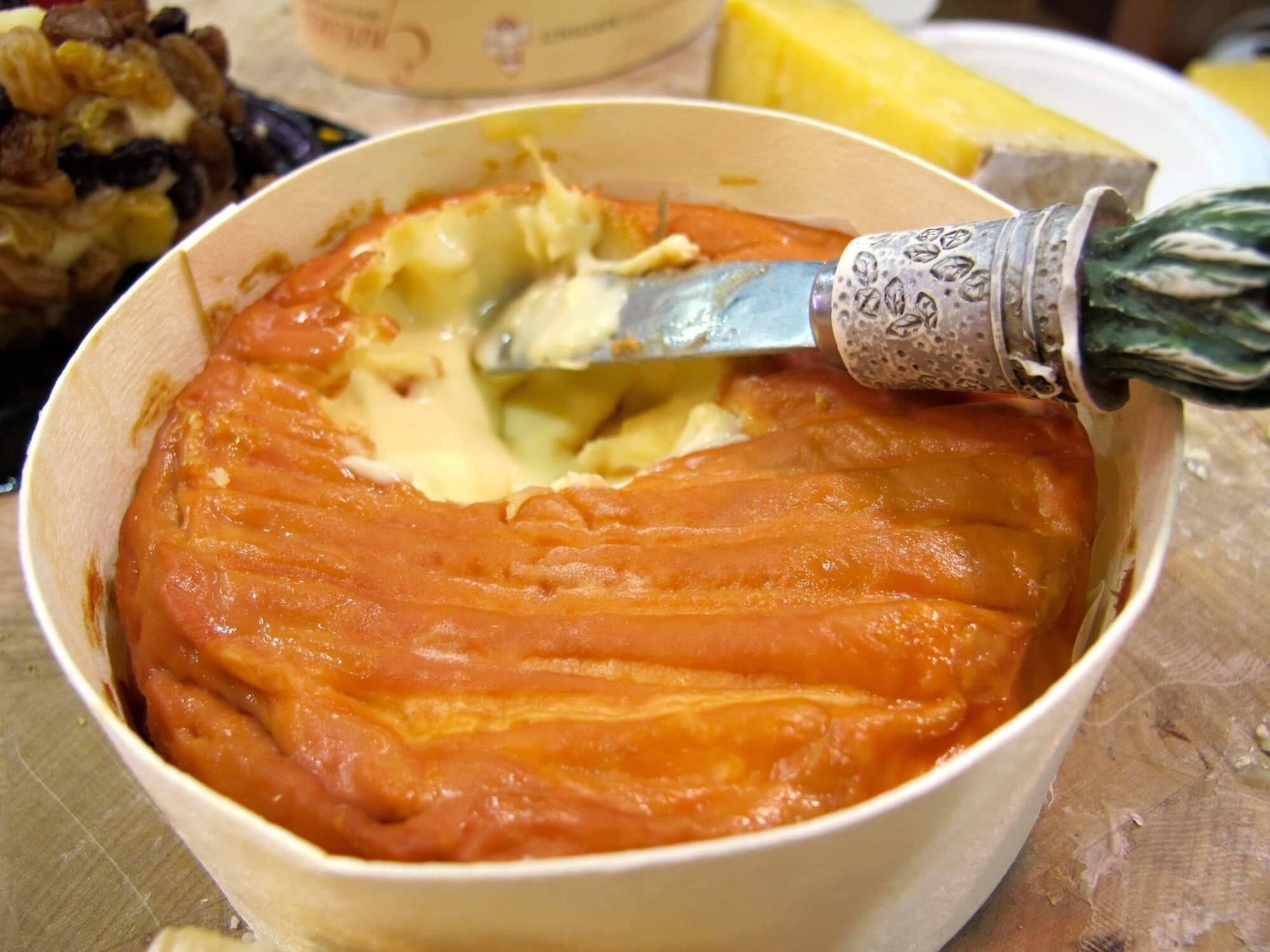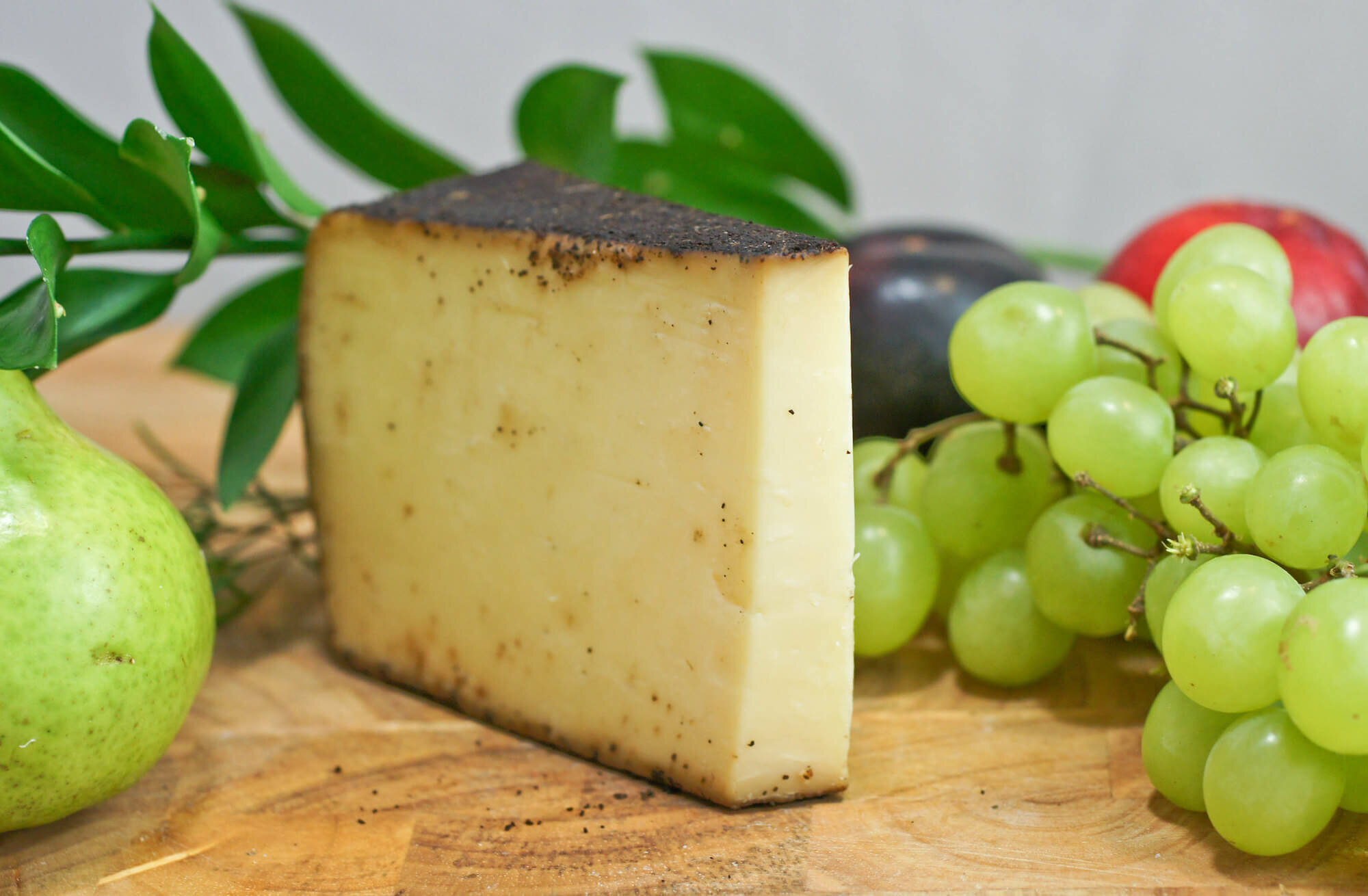The Definitive Guide to 5 Kinds of Cheese Rinds and Which Are Edible?
I’ve taught cheese classes since 2015. No matter what I’m teaching, whether it’s a Cheese 101, Tiki Cocktails & Cheese, or a more intensive training there is one question that people always arrive with: “Can I eat the rind?” It’s a good question, especially given that most of us grew up with the rindless cheeses of the world like blocks of cheddar from the grocery store or shredded low-moisture mozzarella. My answer is invariably, “You always can. But, whether or not you’d like to is up to you.”
Rinds are formed naturally or by the cheesemaker and are there to protect the cheese but sometimes to flavor it. Rinds provide a textural contrast to the cheese but ultimately whether you choose to eat them or not is a personal decision. “I almost always eat the rind, unless the cheese is a firm cheese that is aged for a long time—like a year or more,” says Saxelby Cheesemongers owner Anne Saxelby in her book The New Rules of Cheese. “If you’re not sure about eating the rind, just try a little bite with the interior (also known as the paste) of the cheese and see what you think. You might be surprised!” Not only can some rinds be eaten, some which are very hard such as the rind Parmigiano Reggiano can be used in cooking, learn more in Everything You Wanted to Know about Parmigiano Reggiano Rinds.
Even professional cheese folks have different preferences when it comes to rinds, and ultimately, the only way you know what you like is to taste what’s in front of you. And not all cheeses have rinds. Fresh cheeses like chevre, burrata, feta, and vacuum-sealed cheddar do not, and that is as it should be.
Types of Cheese Rinds
Photo by Margaret Jaszowska on Unsplash
Bloomy
“The primary microbe on the surface of white mold cheese is Penicillium camemberti,” says scientist Pat Polowsky in his website Cheese Science Toolkit “This mold can exhibit lipolytic activity; meaning it breaks down the fat in the cheese.”
Bloomy rind cheeses like brie, camembert, and robiola have a soft white mold rind, which sprouts or blooms in the short time the cheese is aging or ripening. The affineur (cheese ager) pats down the fuzzy sprouts into a layer that will become the cheese’s rind, transforming the cakey fat and protein structure into something gooey and unctuous.
This type of rind is intended to be eaten—it adds texture and mushroomy flavor to the cheese. I always eat this rind unless the cheese is overripe and there’s intense ammonia coming from the rind. When you shop from small cheese counters with trained mongers who cut your cheese to order, this won’t usually be an issue.
"Some SICK Epoisses at the Fresca Italia table" by the tablehopper is licensed under CC BY-NC-ND 2.0
Washed
Washed rinds have been washed in a culture solution that turns that beautiful velvety white rind into something sticky, orangey, and rather smelly. One of the primary cultures associated with washed rinds is Brevibacterium linens (B. linens), a compound that generally gets most of the credit for the funk. However, recent studies have shown that B. linens may be getting too much of the credit—often, local bacteria strains take over, even if B. linens have been introduced.
Some washed rinds can have light crystallization on the rinds, giving them a subtle crunch. If you don’t enjoy that, you obviously don’t have to eat it. But I do find that I enjoy the rinds of most washed rind cheeses. Examples of washed rind cheeses include soft cheeses such as taleggio, Winnimere, Epoisses and hard rind cheeses including Gruyère. Some washed rind cheeses can have a potent aroma, but the flavor may still be mild. Don’t be scared of trying a cheese with stinky rind!
"Barely Buzzed, Cheese with Espresso Rind" by artizone is licensed under CC BY-NC-ND 2.0
Flavored
From Cabra Romero, a Spanish goat milk cheese coated in rosemary, to Barely Buzzed, a cheese from Beehive Cheese in Utah rubbed in espresso and lavender, some cheeses have flavors added to the rind. These are intended to be eaten and will usually be quite tasty. Common coatings include herbs and spices.
Natural
This can range from the pliable rinds on cheeses like tommes that look and smell like a cave wall to the firmer rinds on cheeses like Comté or Parmigiano Reggiano. Once a cheese is aged a year or more, I generally find it too hard, but that’s personal preference. It’s worth giving the rind a bit of a nibble and seeing what you think. The only rind I absolutely never eat is Parmigiano Reggiano rinds, which are far too hard. I throw those in the freezer and use them for stock, soups, or to flavor pots of beans.
"Gouda Cheese" by eelke dekker is licensed under CC BY 2.0
Inedible
This could include the bark on Jasper Hill’s Harbison, the colorful wax layer on some goudas, paper, foil, etc. It’s important to remember that these are food safe—in other words, you won’t become ill if you accidentally ingest a bit—but they’re intended to be discarded.





